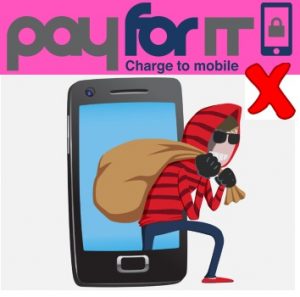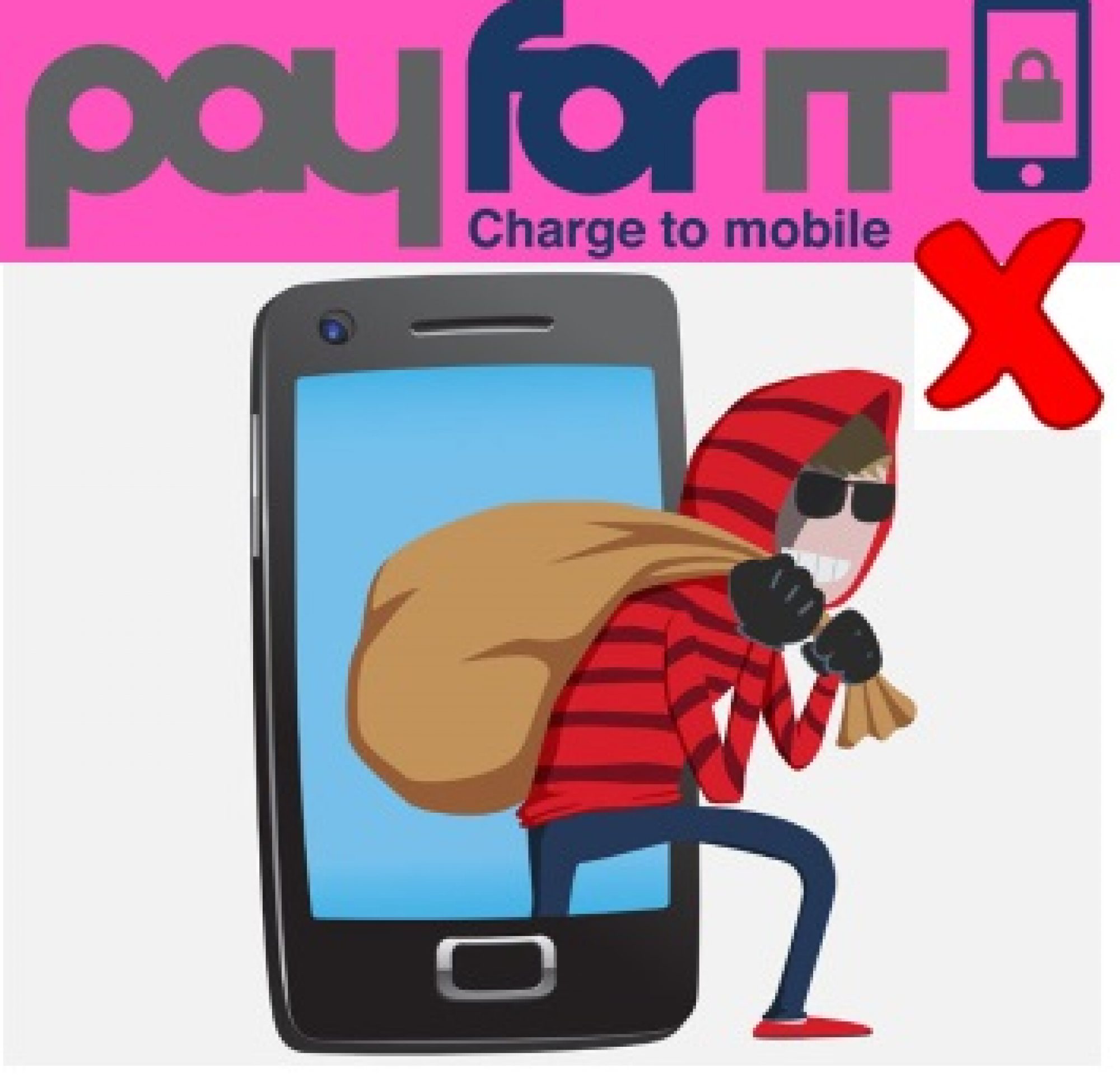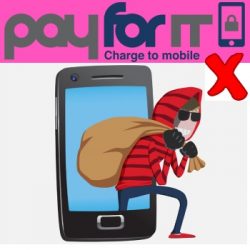IMPORTANT IMPORTANT
This website is no longer active. It documents a period when rogue “service providers” successfully charged consumers for “services”, directly to their mobile phone bill. These “Phone-paid services” were poorly regulated and caused considerable consumer discontent. After a few years of pressure from this website and others, the regulator finally “got a grip” and the scams ended (well, almost!). We’re leaving this site up for a few more years as a reminder to the regulators that having gained the upper hand, they need to keep it that way and never again allow scam companies to make unauthorised charges to consumers phone accounts.
Welcome
Welcome to Payforit Sucks. – We seek to raise awareness of ‘third party charge to bill’ or ‘Payforit’ frauds. If you have found your way here you may be the victim of one of these scams, or you may just be curious about how these scams work. Either way, the information on this site should help.
Follow @payforitsucks
What are Payforit Scams
These scams occur when rogue companies plunder consumers ‘phone accounts via a scam based on the Payforit mechanism. The Phone-paid Services Authority is the regulator with responsibility for such services. The industry pays for this regulator which is probably the reason why it’s regulatory efforts seem to be so poor.
The scams work like this:
- When you access the internet via mobile data (as opposed to WiFi), the networks “leak” you number to “third parties”, via Payforit. When you click a link on a web page, your network sends your MSISDN to the third party company called an “Accredited Payment Intermediary”.
- Once they have your number, the networks allow these third parties to make charges to your account. If you have a credit account, the charges will be added to your bill. If you are on PAYG, the charge will be deducted from your airtime credit. It will not be deducted if it would make your PAYG balance negative.
- The networks claim that you must have consented to the charges by “clicking on a link”. In reality, javacript exploits known as clickjacking and iFraming auto-subscribe you. Just closing a popup can initiate a subscription.
- These scams work using a five digit “shortcode” which helps identify the originator of the charge. The regulator maintains a “number checker” which you should be able to use to identify who is charging you from the shortcode. The problem is that these shortcodes are often shared between a number of scam “services” and the details of some companies are missing.
- The networks usually refuse to offer any help to victims of these scams. They tell the victims to send a STOP message to the shortcode associated with the service. Incredibly they actually expect you to PAY to send this text!
- If you want a refund, the network will usually expect you to negotiate directly with the scammers. At least the numbers associated with these services are standard rate! Some companies refund quite readily, especially if you make it clear that you know your legal rights. However, often these companies are based in overseas jurisdictions, where the UK small claims procedure can’t be used.
- Under the Payforit rules, networks are supposed to help you once you have attempted and failed to get a refund from the scammers. However, the networks usually attempt to shirk these responsibilities. You can invoke your network’s formal complaints mechanism to get them to take action. Alternatively you can use the Small Claims procedure to take ction against your network, citing their negligence in allowing these scams to defraud their customers, and their failure to follow their own published procedures.
- BBC Watchdog commissioned a report on Payforit in May 2019. It said “Various media outlets have reported on this issue, as well as the BBC Watchdog program investigating the problem. The consensus is that the majority of payments being used by the service have been made fraudulently without the users being aware.”
The BBC Watchdog research is here
Who is responsible?
All the major mobile networks in the UK implement this system (and take a share of the profits from it). The Payforit Management Group (PFI MG) consists of the UK Mobile Network Operators (MNOs) who control the Payforit scheme rules and representatives of Accredited Payment Intermediaries (Level 1 providers) and merchants (Level 2 providers) who actively influence the development of the scheme rules. Thus O2, Vodafone, Three and EE jointly run the service, and are directly responsible for it.


